
Delivery Battle
Delivery Battle is a casual team competitive game. A total of six players are divided into two teams, compete and carry express delivery in complex terrain to win.Throughout the game, players can carry boxes to earn points, and carry roadblocks to prevent the opponent from earning points.The mechanism of destroying boxes to obtain props has been added to the game, which can make the situation on the field change rapidly.Since the game is suitable for multiplayer online experience, it has undergone the guidance of Lilith Game Company and is now on the online game platform.
RESPONSIBILITIES
Level Designer
-Immovable obstacles, movable obstacles layout design
-Resource distribution design
-Draft the map and blocked out
-Resource occurrence frequency, choke point design
-Map elements change gameplay design
Programmer
Producer
-Gameplay Implementation
-Resource management module design
-Player joining or leaving room event implemented
-PC terminal mobile terminal transplantation
-Frame synchronization changed to state synchronization
-User UI feedback and special effects implementation
-Iterative document writing
-Gantt chart production
-Art and code requirements list making
-QA feedback BUG fixes
-Organize art and audio material in the game
PROCESS OVERVIEW
RESEARCH
-Analysis casual competitive game players' experience (Party Animals, Super Mario Party)
-Look at the map design of other MOBA games (League of Legends, AOV )
PLANNING
-Design and build a fragmented casual competitive game with an average game duration of less than 10 minutes.
-Design dynamic choke points to create dynamic matchups
-Four players are divided into two teams working together against each other
-3 types of objects the player can carry (score, block, loot)
-3 items available to the player (attack, acceleration, direct score)
-200*200 Small map increased counter density
-The complete game flow includes selecting teams to the billing interface
BLOCKOUT AND ITERATION
-Implement the map with large immovable obstacle and small movable obstacle
-Scattered resources that refresh every 10 seconds for players to loot
-The only high scoring goal that appears at a long interval increases the player's confrontation
-Players pick up and put down the function, the function of props to achieve
-Artistic iterations of map scene elements and world view Settings
-The transition from frame synchronization to state synchronization
-UI feedback and in-game effects feedback implemented
-The implementation of server resource controller retro-plug-in function
-Character model and texture iteration
-Game start interface, end interface, tutorial art optimization
In-depth Understanding of the Design Content
In the following sections, you can learn more about the design ideas and tips for this game, which shows my work during the game.
Core Gameplay Implement: Carry
There are three types of objects players can carry: roadblocks, normal boxes, and gold boxes. Program logic to determine the state of the local end player pick up, the server will delete the target object, while changing the state of the player carrying the object.
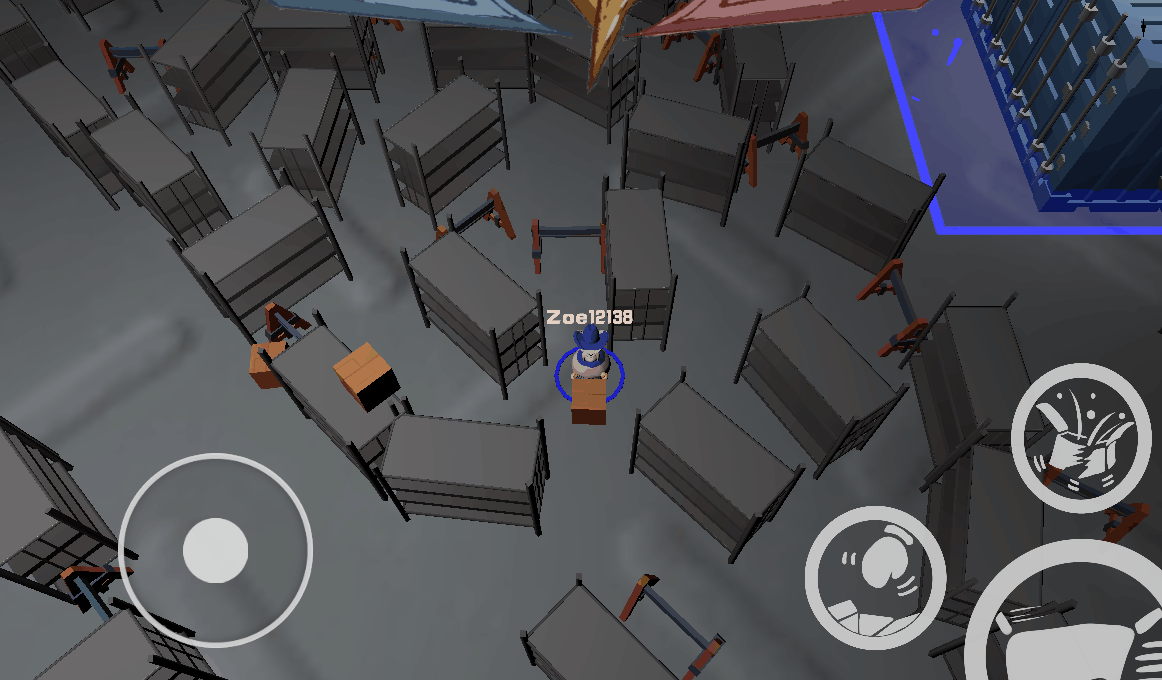

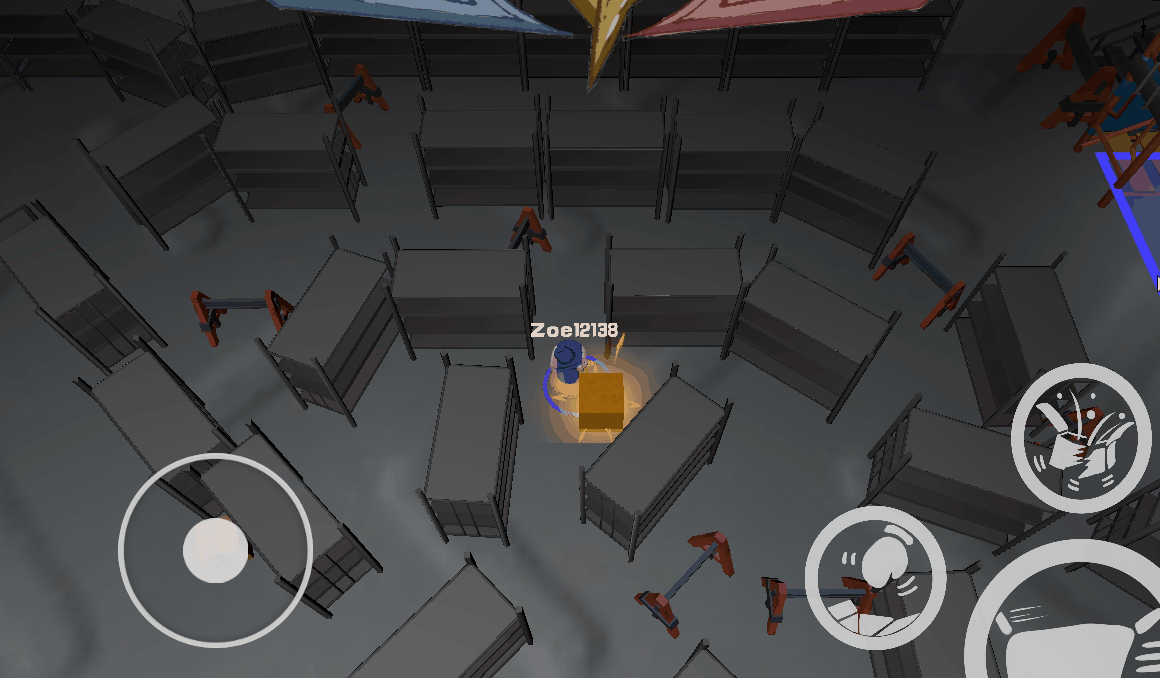
Core Gameplay Implement: Broken Boxes to Get Props
In order to increase the sense of joy in the process, the function of destroying boxes is added, which has a certain sunk cost. When the player spends time moving boxes near the scoring point, there are personnel of the enemy team interfering with them, and the player has a strategic choice at this time: Give up the sunk cost to destroy the box for the opportunity to get an offensive item (hammer) to switch between attack and defense, choose to bypass the box to score.
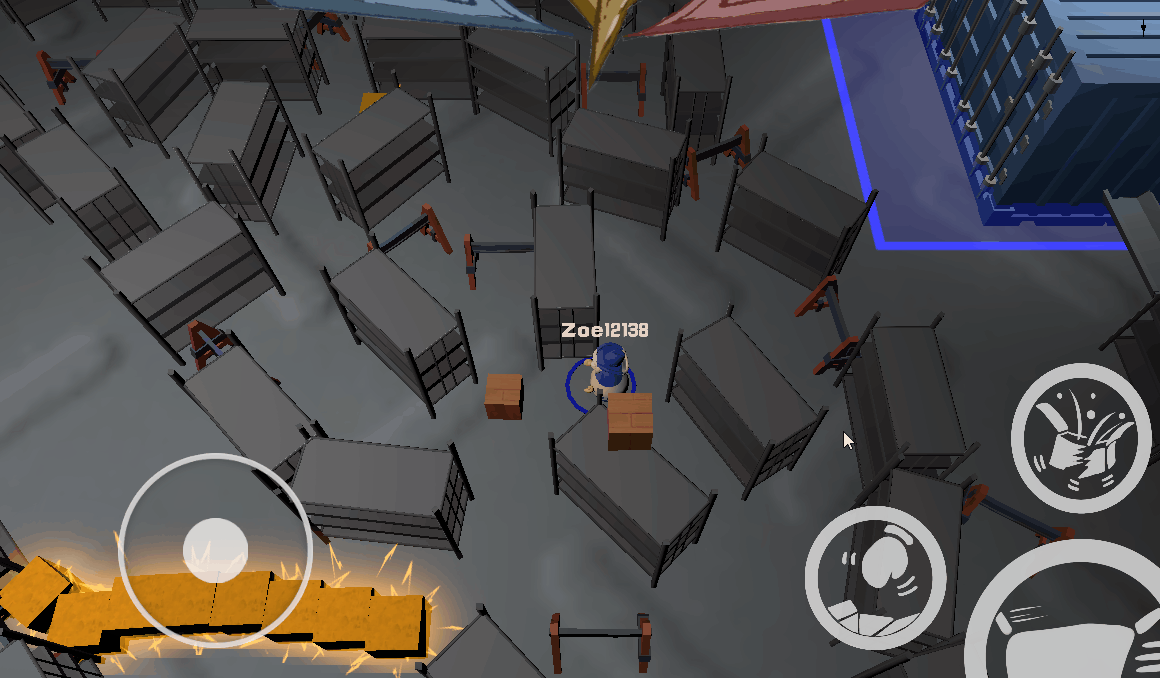

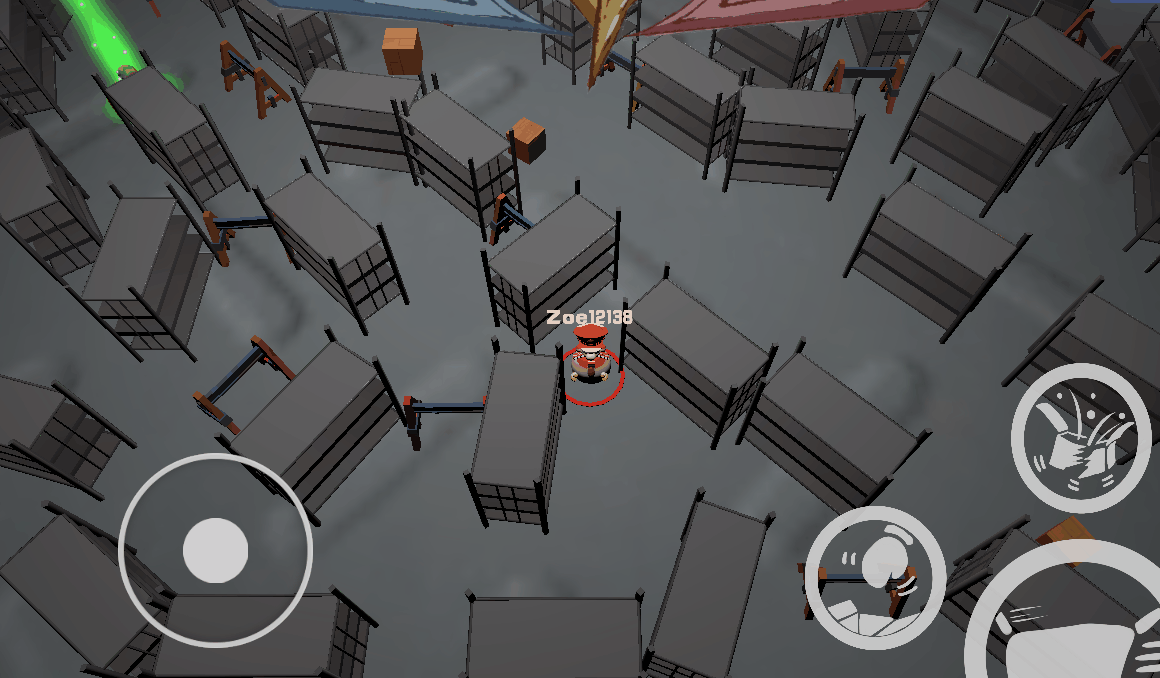
Props Design: Three Kinds of Functions with Combo
In order to reduce the player's learning cost, items are divided into three types: earn points directly (for gambling). Dummy players, rather than carrying points, players can directly get gold items from the chest), attack items (attack and defense). An important part of the transition, and added the effect of shooting down objects in the hands of the target to increase the conflict of the game, drum. Encourage the player to have a hammer to grab the box), BUFF items (increased character speed, funny screen, let the player run. There are two strategies that come out of this: scoring furiously during acceleration (the sense of achievement from dribbling through the ball) and blocking furiously against the enemy. The addition of items further increases the decision tree extension when the player has the item, thus increasing the diversity of the game.

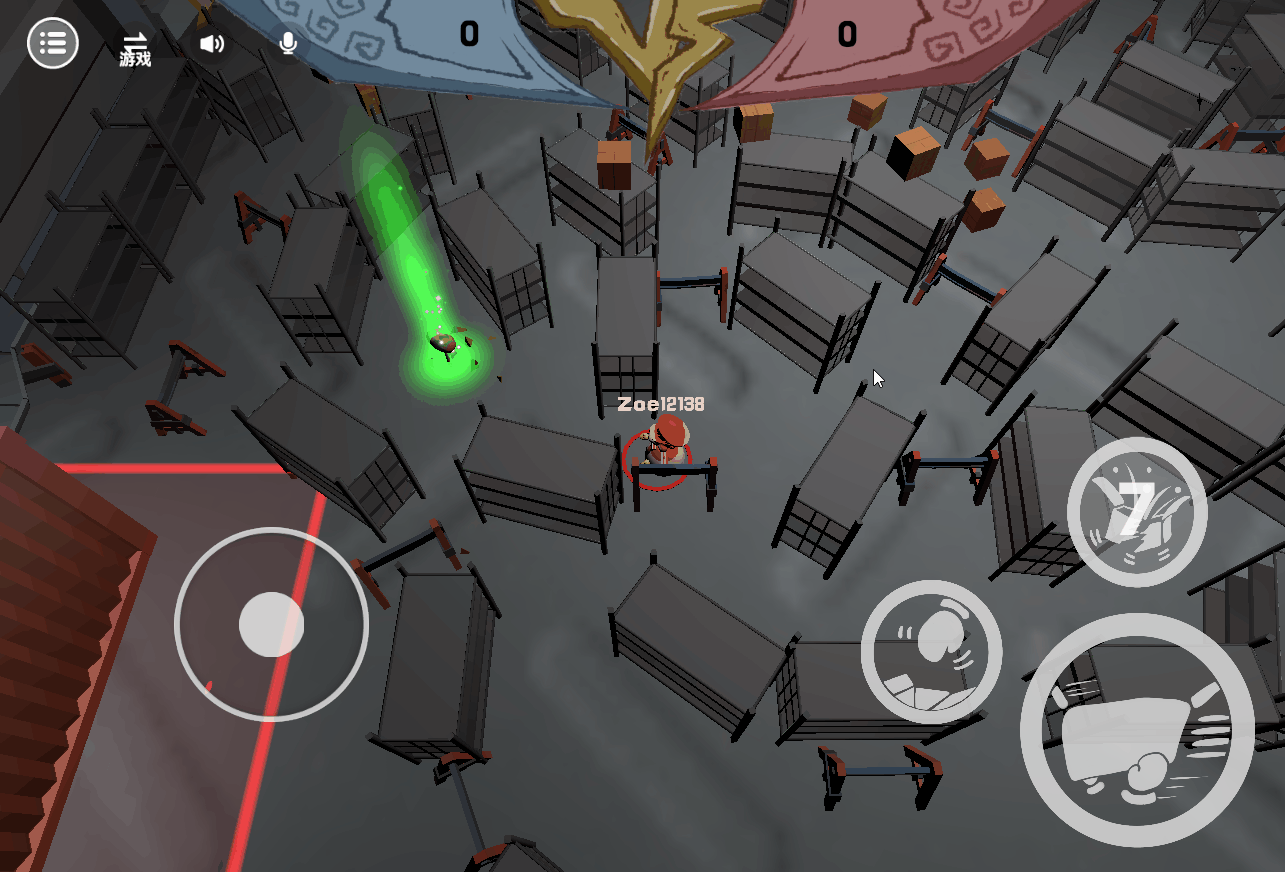

Scene Map Design: MOBA Game
The scene design references a traditional MOBA map, placing the scoring base for each side in the lower left and upper right corner of the map. As a target point for the player. The cart will drop boxes along the diagonal of the split area for players to fight over, but there will be one. The problem is that the other two corners of the map rarely move around, and the scene is designed in two different ways.

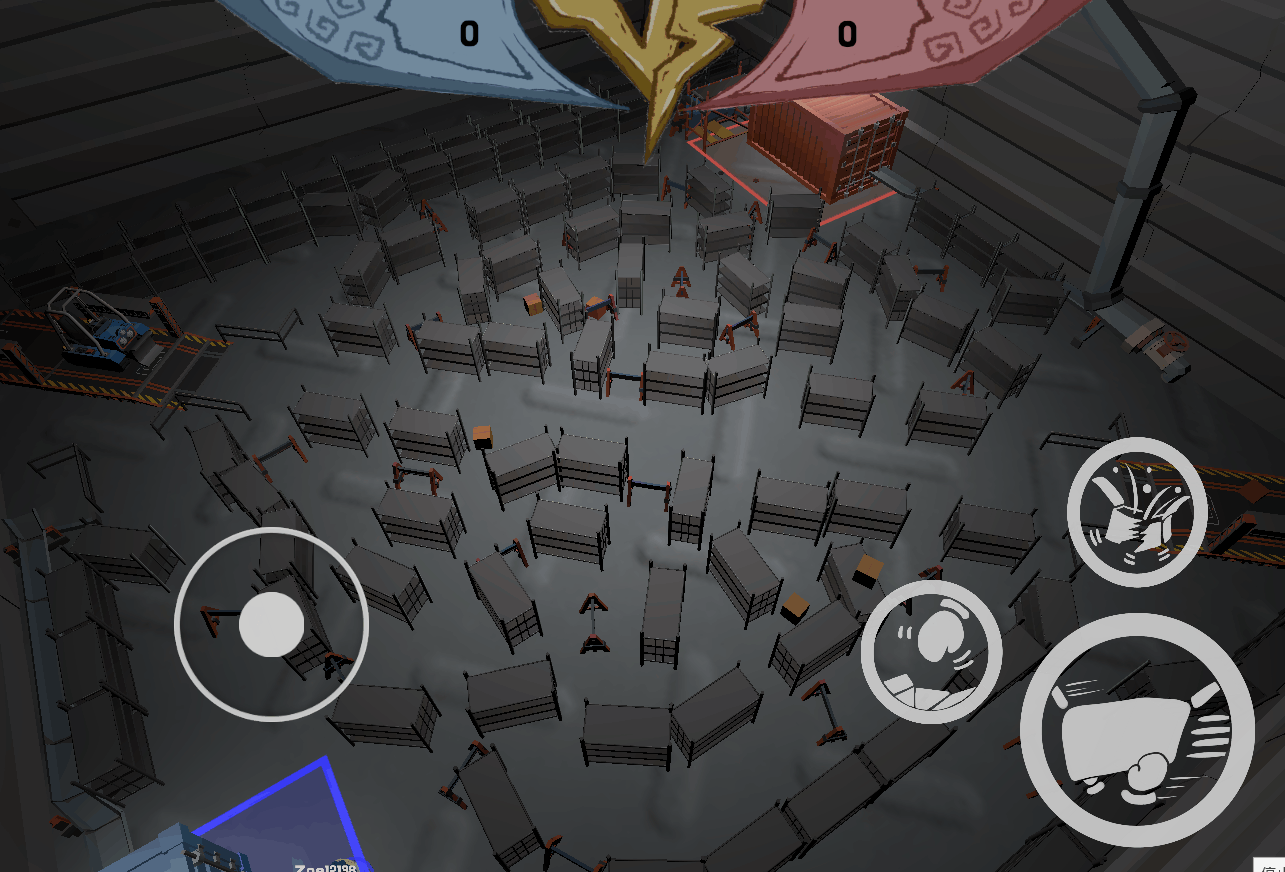
This game uses the competitive game and the ideal line principle to carry on the mechanism design, first is the ideal line part, the player is very obvious ability feeling. The vertical line is shortest between the point and the line, thus producing the ideal line in mind (ignoring all obstacles, the line arrives, somewhat similar. Cross the lawn to reach the destination). The express racks in the scene map are not placed randomly. As can be seen from the following figure, almost all of them are. The road between the delivery racks can be blocked by the roadblocks, which means the player can adjust the position of the roadblocks. The channels of each scene change in real time, resulting in a strategic choice: the player taking the shortest path will take less time but will be easier to use. While taking the long way around is difficult to block, the shortest possible path is in the whole game. Dynamic changes due to player behavior increase the diversity of the game. The player can choose when the enemy is attacking heavily. Take a long route to get to your destination, or take the shortest route to get to your destination when your teammate is covering you.




The design of ideal line increases the variety of transportation route options for players, while the competitive game increases the number of players competing for boxes slightly more diversity. Boxes are generated at intervals of 10 seconds, 6 boxes are generated each time, and the number of boxes is increased. The random force is thrown along the middle path, because the ideal line exists and the number of spawns is high, and the player will instinctively fight for it. Grab the box in the middle of the scene. This area is the main competition point. It is easy to appear the conflict of players fighting for the box, and the corner area is far away. They are farther away but also generate crates, which, although fewer in number, are less competitive and easier to acquire and safely transport.

Version of the Iteration : Project Management and Requirement List


